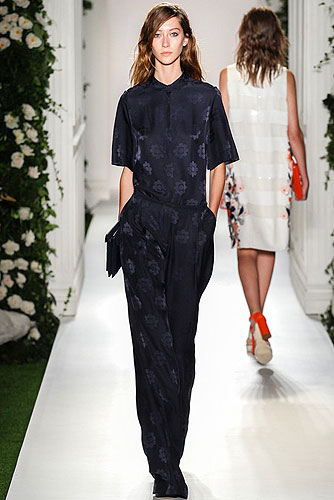
































Over the past six years, Hill has established the voice and aesthetic of Mulberry as the brand is understood now, and it's been a lucrative tenure.
www.mulberry.comLondonFashion WeekFashion Brand
Over the past six years, Hill has established the voice and aesthetic of Mulberry as the brand is understood now, and it's been a lucrative tenure.
"Over and out. And I really do wish this brand the best." That was Emma Hill's parting message today as she showed her final collection as the creative director of Mulberry. Over the past six years, Hill has established the voice and aesthetic of Mulberry as the brand is understood now, and it's been a lucrative tenure. The question hanging in the air at this afternoon's show was: Where does Mulberry go from here? That remains to be discovered, of course, but in the meantime, Hill's swan song was a signature effort.
The looks here were typically cheerful, a polished paean to the English stately home with a whiff of the sixties in the prints and silhouettes. Hill's characteristic move is to create a sense of buoyancy in her collections by magnifying elements of the clothes—blowing up a print, slightly oversizing a sleeve or a pant leg, exaggerating a collar, etc. The effect was muted here, but the rule still applied; note, for instance, the enlarged Marimekko-esque floral on several silk pajama-style ensembles, like the one shown in pale blue on Sam Rollinson. Or consider the broad tonal stripes, executed either as an intarsia knit or by paneling strips of suede and leather. There was a nice sporty mien to those pieces, especially the long striped shorts. Elsewhere, Hill introduced a very pretty—and relatively sedate—silvery gray jacquard, and added a touch of sparkle to that shine by applying tiny sequins to some quilted white floral pieces. All very sweet, in the Mulberry style. And as a kind of parting gift, as well, Hill debuted a new handbag on the runway: the Kensal, a briefcase-locked shoulder bag. She's going to be a tough act to follow.